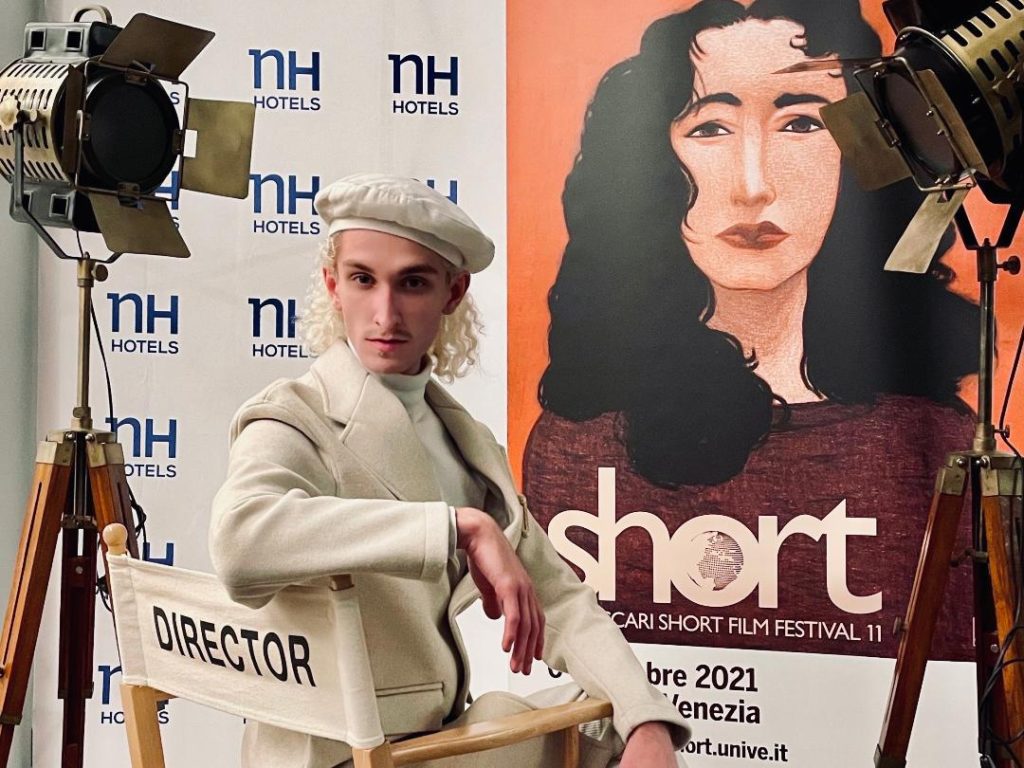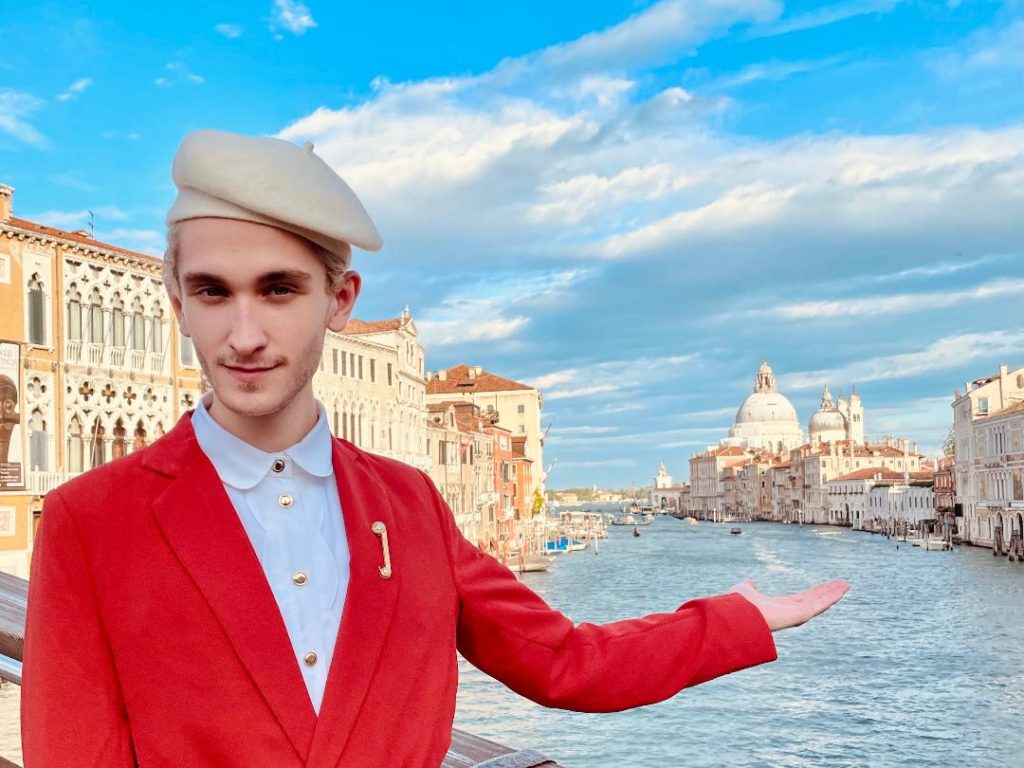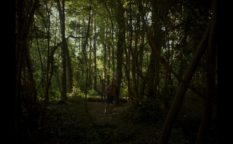Dominik György: “Real life is not edited”

The Year is 1989, and Czechoslovakia is only five years away from being dissolved, and about to enter the so called Velvet Revolution which will end the 41-year long rule of the Communist Party. Some changes are already very pulpable, among them – disappearance of something called ethic commissions which had a say in women’s right to abortions. As soon as they were gone, women from all parts of the country stormed the hospitals to terminate their unwanted pregnancies.
Dominik György turns to this topic in his short drama The Next One showing a young woman in distress on her journey to terminate the pregnancy. The film is shot in one take, with camera following the woman through the hospital corridors, always close to her. It’s an intense chase for the solution to one seemingly unsolvable problem that the viewer is confronted with, and which will take an unexpected turn.
The Next One is one of the most accomplished films that competed at Ca’ Foscari Short Film Festival earlier this month, and we sat down with Dominik György to talk about his motives to turn to this topic, and to the particular year the film’s narrative was set in.
It’s not very typical for a man to deal with this kind of topic with such a depth. What motivated you to turn to this particular issue?
The fact that I’m a man was the main reason, because men are unfortunately still making decisions about women. They form governmental majorities almost everwhere, and they are the ones who are pushing the anti-abortion laws. I simply wanted to stand up and show through this film that abortion is actually about men, but without their presence. The problem that the main character of my film is facing was caused by a man, but she is dealing with it on her own, completely alone. That guy has desappeared.
It’s a paradox that men are making decisions about women’s destinies. It was very important to me to address this topic because it’s trending. Just look at what’s going on in Poland, Hungary, or in Slovakia where yesterday the anti-abortion law passed the second round of voting in the parliament. It’s very fresh and shocking.
We have to talk about this now, because if we wait a bit more, it will be too late. We have to change something.
I remember many things depicted in the film vividly, because I experienced some of them in the 1980’s. I therefore need to ask you about your research.
I was trying to establish some connection to the past, and to reach people who were about the same age in 1989. One has to remember that back in the day the country was called Czechoslovakia. I found information in the archives, and through historians – my friends and aquaintances from diverse universities, that during the communist regime there were so called ethic commissions that decided about every single abortion case. There had to be a good reason for the procedure (illness, too many children, rape..), but even if a case was strong, there wasn’t a guarantee that the abortion would be approved. They tried to set the bar really high. Basically, they didn’t want to have babies killed because they wanted to have a huge population to secure the national identity. They didn’t really care about individuals.
I found out about those commissions in Czechoslovakia, but also what happened after the fall of the communist regime. In 1989, there were 21000 abortions, because the commissiones were gone and suddenly many women decided to use the opportunity and terminate their pregnancies.
There was no sexual education in schools, and there was no contraception. Not just contraception pills, but there was a shortage of condoms. Since everyone was silent about sex, the consequences were huge. The teenagers were uninformed, the adolescents confused, and basically nobody knew what they were doing. When democracy reached Czechoslovakia, there was a chaos in sexual behaviour.

You seized for some strong genre elements to accentuate the awful state of things in the hospital.
Because of such a large number of women who wanted to abort, the conditions in hospitals were awful. The medical personnel didn’t have time to be nice and polite, and even the medical supplies were on a miserable level. Women had to bring their own compression stockings. If they forgot them, there was no surgical procedure.
I didn’t want to develop the film like a classical social drama, because it would have been just another emotional film with a message. Here, you can take any conclusion you want. I chose a blend of thriller and horror to speak about a social topic. I wanted to bring that claustophobic feeling of a horrible preassure forward. The girl is not only scared for her health, she is also petrified of her future and everybody else in that hospital corridor. For that reason we had the scene with a blackout when the light suddenly turned red, which symbolises the blakout of her mind, and at the same time – the red colour stands for communism and for blood. Also, it’s the type of red light used in the darkrooms for developing films, because she starts seeing what she’s doing in that moment. She is actually killing that other woman in the red light while she’s stealing her stockings. It was a hard decision she had to make, chosing her own life over someone elses. But then she changed her mind, and she brought back the stockings, and decided to keep the baby.
I used the red light that could be interpreted one way or the other, and it’s up to the audience what they will make out of it.
The photography is very monochrome. Although not black & white, it is almost completely drained of life. Can you tell me how much of it was your decision.
We had the set built in a studio, so none of the scenes were shot in a real hospital. We had a huge access to all kinds of lighting. Due to the architecture of the setting I decided to shoot the film in one take, and everything had to be rehearsed to perfection. It took us two full days to do it, and on then third day we were shooting the film. We were rehearsing dialogues, movements and lighting, specific timing of the action, basically everything. All decisions regarding the colour grading, photography, camera movement, light and music were decided about before the shooting because I wanted to bring the audience to a specific place, and to make them withess the events that took place in that particular time, in order to be able to understand what the main protagonist was going through.
That’s why I chose the anamorphic lenses to make the background look like being observed through the human eye, with the focus in the middle. We always had her in the centre, focusing on her face or on the back of her head and shoulders. We were basically constantly breathing on her neck. That was the reason for the choice of lighting. The neon lamp is flickering in the rhythm of her heartbeat.
I decided for a monochromatic photograph because the communist regime made the life in Czechoslovakia very grey. There were basically no colours. The clothes were in the shades of brown, grey and black. When you look at the photographs from the archives, everything is simply grey. Also, because of that atmosphere that reigned in hospitals, stern, lifeless, the colour of the skin is almost completely white. People almost look like corpses. The girl is so swollen, sweaty and white, she looks like being ill. The aim with our choices was to make the setting look disguisting.
It is necessary to show to children, men and women that this has already happened before, and that it should never happen again. I wanted to stand up as a man and say very loud: “Hey guys, stop this. This is crazy!”
How would you describe your film to a potential viewer?
It’s a 15 minute long film depicting life-changing events for a young woman in post-communist Czechoslovakia. It is shot in one take, because real life is not edited.
How did you cast your lead actress?
That was one of the most difficult things about making this film, because I was looking for a very specific type of girl. Because it was the end of the 1980s we opted for a very modern look – short hair and leather jacket, piercing and such. I wanted to make sure that my lead would represent thousands of young women after the fall of the communist regime. Only few months before the time time the film was set in, she couldn’t have possibly looked like that.
















